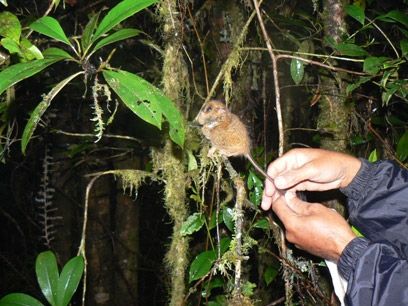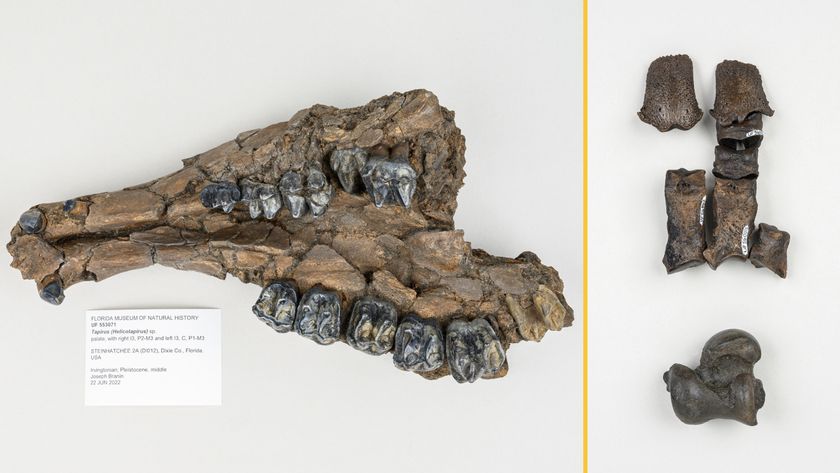Gremlins Thought Extinct, Found After 85 Years

Mouse-sized primates called pygmy tarsiers, not seen alive in 85 years, have come out of hiding from a mountaintop in a cloud forest in Indonesia.
Weighing just 2 ounces (57 grams), they resemble mini gremlin creatures, as they have big eyes and are covered in dense coats of fur to keep warm in a damp, chilly habitat. Unlike most other primates that sport fingernails, pygmy tarsiers have claws, which scientists say might be an adaptation to grasping onto moss-covered trees.
The recent sighting has conservation implications. And researchers said they hope that with new information about where the species lives, the Indonesian government will protect them from the encroaching development occurring in the animals' home range.
Hide-n-seek
The last sighting of this primate alive was in 1921 when live specimens were collected and processed for a museum collection.
Decades went by without another sighting. And scientists thought the pygmy tarsier (Tarsius pumilus) had possibly gone extinct. Then, in 2000, two Indonesian scientists who were trapping rats on Mt. Rore Katimbo in Lore Lindu National Park in Central Sulawesi, Indonesia, reported they had accidentally trapped and killed a pygmy tarsier.
So Sharon Gursky-Doyen of Texas A&M University and her grad student Nanda Grow, along with a group of Indonesian locals, went looking for the teacup-sized primates on that same mountaintop. This past summer, the team trapped two males and a female. They placed radio collars on the animals for tracking.
Sign up for the Live Science daily newsletter now
Get the world’s most fascinating discoveries delivered straight to your inbox.
Since pygmy tarsiers can turn their heads 180 degrees, this process can be dangerous, as Gursky-Doyen found out.
"I have the dubious honor of being the only person in the world to have been bitten by [a pygmy tarsier]," Gursky-Doyen told LiveScience. "My field assistant was holding the tarsier and I was attaching a radio collar around its neck and while I was attaching the radio collar he bit me [on the finger]."
The female has since been eaten by a hawk, Gursky-Doyen said.
Wacky primates
From the radio collars and observations, the researchers are learning more about the animals' behavior. For instance, even though the pipsqueaks weigh just one-half the body weight of other tarsiers, their legs are just as long. The tiny tots use their super-long legs to bound from treetop to treetop high up in the forest canopy.
And for sleeping, the nocturnal creatures tuck into hollowed-out trees. They also are much quieter than other tarsiers, such as the spectral tarsier that vocalizes for up to five minutes when returning from a night of foraging.
The researchers hope to continue studying the pygmy tarsier to glean more information, for instance, about why the animals are so much smaller than other tarsiers and to refine the extent of their home range.
The research was funded by National Geographic Society, Conservation International Primate Action Fund, Primate Conservation Incorporated and Texas A&M.
- Video – Clever Primates
- 10 Species You Can Kiss Goodbye
- Amazing Animal Abilities
Jeanna Bryner is managing editor of Scientific American. Previously she was editor in chief of Live Science and, prior to that, an editor at Scholastic's Science World magazine. Bryner has an English degree from Salisbury University, a master's degree in biogeochemistry and environmental sciences from the University of Maryland and a graduate science journalism degree from New York University. She has worked as a biologist in Florida, where she monitored wetlands and did field surveys for endangered species, including the gorgeous Florida Scrub Jay. She also received an ocean sciences journalism fellowship from the Woods Hole Oceanographic Institution. She is a firm believer that science is for everyone and that just about everything can be viewed through the lens of science.
Most Popular




